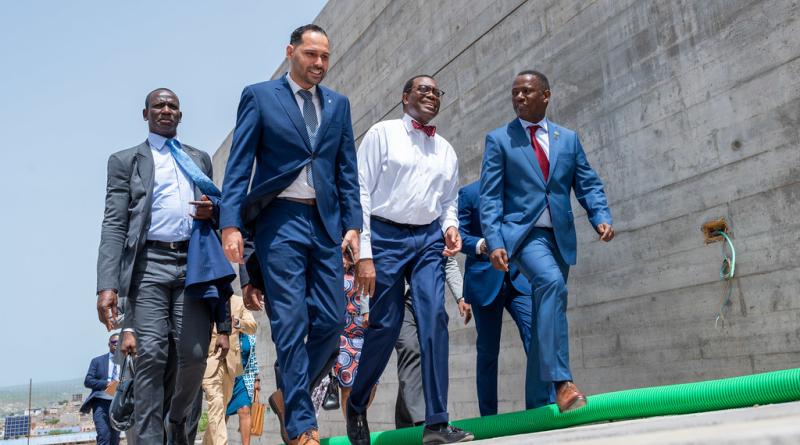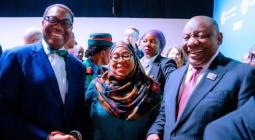Two IMF fixes that could channel billions to Africa

The formula for allocating SDRs, an invaluable source of funding, was agreed in 1944 and channels the most money to the richest nations.
It is a truism that the countries and citizens that face the greatest challenges in tackling global problems – from pandemics and food inflation to the climate crisis – are they ones with the least financial resources to address them. Take Covid-19, for instance, in response to which the G7 spent over $6 trillion while the whole of Africa spent just $130 billion over 2020-21.
Novices to international economics might assume that the role of international financial institutions is, at least in part, to correct this. The International Monetary Fund (IMF), after all, is the lender of last resort for many countries, while the World Bank provides billions in loans and grants to low-income nations.
The reality, however, is that all too often, the mandate and instruments of these financial institutions are so limited that they, at best, offer temporary respite to poor countries and, at worst, exacerbate existing inequities.
There is no better example of this in relation to Africa than the recent fiasco around Special Drawing Rights (SDRs). These international assets were established by the IMF to supplement the reserves of member countries. They remain the IMF’s only instruments that can provide “quantitative easing” for countries without specific conditions on the use of the finance.
In August 2021, the IMF issued $650 billion in SDRs ostensibly to support countries responding to Covid-19. Yet rather than distribute them based on need, the IMF’s board, which is dominated by its largest shareholders – the world’s wealthiest countries – decided to issue the SDRs to countries based on how many IMF shares they own. This meant that African countries, who collectively have just 5% of IMF shares, were allocated just $33 billion. Japan and China each got approximately $42 billion of SDRs. The US received $112 billion’s worth.
Unsurprisingly, African leaders argued for more and received some support. In May 2021, France had proposed that $100 billion of wealthy countries’ SDRs should be reallocated to low- and middle-income countries. A few months later, it committed to rechannel around $10 billion of its SDRs for this goal. In November 2021, China one-upped France by committing to rechannel $10 billion of its SDRs specifically to Africa.
Slowly but surely, more promises trickled in and, at the Paris Summit in June 2023, IMF Director Kristalina Georgieva announced that $100 billion of pledges had been collected. Approximately $60 billion of that, she said, was specifically pledged towards two of the IMF’s distribution instruments – its Poverty Reduction and Growth Trust (PRGT) and a newly-created Resilience and Sustainability Trust (RST).
On paper then, it seemed an inequity in the SDR distribution had been – albeit partially and voluntarily – corrected. But a new problem emerged, and remains. Just a tiny proportion of the pledged $100 billion has been disbursed. African countries received just $10.9 billion through the PRGT in 2021-2, while only one country (Rwanda) has received a disbursement through the RST of $320 million. To put this in context, the African Development Bank (AfDB) has, as part of its normal business, approved projects to African countries over the same time period worth approximately $14.5 billion.
From an African perspective, then, it is clear that these international responses – from the initial skewed allocation to their general amorphous “pledges” – have been inadequate and should not be repeated in this or other contexts.
One short-term solution
Our view at Development Reimagined is that there are two key solutions to this disappointing outcome going forwards – one short-term and one long-term.
First, in the short-term – and especially as African countries continue to face significant fiscal challenges from the impact of Covid-19 as well as global food and fuel inflation and the need to take action on climate change – there is a strong case for wealthy countries to commit a specific and significant allocation of SDRs to Africa’s own institutions, in particular the AfDB. The reallocation of SDRs to the AfDB is rightly a major focus of the COP28 discussions and top priority for the COP28 presidency.
France’s $100 billion proposal should be maintained, with at least $50 billion of that earmarked for Africa, which accounts for over 50% of extreme poverty worldwide. If, say, each of the G7 plus three or four other countries were to contribute equally, this would require a pledge of around $5 billion of SDRs each for Africa. 50% of these reallocations ($25 billion) could go to the AfDB, 25% ($12.5 billion) to other African financial institutions, and the remaining 25% to other channels such as the RST or even bilateral swaps.
This is highly feasible, not just because of the disbursement capacity of these African institutions but because the AfDB and others are already designated as “prescribed holders” of SDRs. That means they can hold, convert, and use SDRs.
In addition, the AfDB over the last two years has been designing a “Hybrid Capital Instrument (HCI)” through which new SDRs can be leveraged 3-4 times to on-lend to member countries. It has announced that for the HCI to become operational, the AfDB needs at least five SDR contributor countries. Furthermore, some potential contributor countries have specific ongoing joint funds that could easily be replenished with SDRs. For instance, AfDB and China’s Peoples Bank of China (PBOC) together run the Africa Growing Together Fund (AGTF), which was capitalised with $2 billion in 2014 and is due for renewal in 2024.
When it come to climate action, SDRs are also especially useful in that allow countries to address key challenges without incurring additional debt. With the ongoing COP28 forum focusing on innovative mechanisms for scaling up climate finance and development finance, this is a great opportunity for countries to commit to reallocating their SDRs through AfDB and other African financial institutions.
One long-term solution
The second solution to the SDR problem is more systemic and long-term. As our CEO recently explained in a session on global financial architecture reform, the need to reallocate SDRs to African countries would not have arisen if the African continent had a larger share of the $650 billion’s worth of new SDRs in the first place.
The current “quota formula” for sharing SDRs was first agreed in 1944 by 44 founding countries. Of those countries, only four were African, of which two (South Africa and Egypt) were not yet independent. At the same time, some founding members, such as the UK and France, were still holding 35 other colonies and argued that this should afford them greater quota shares. This history, along with the SDR fiasco around Covid-19, raises the question of whether a long-term answer is to change the quota formula.
The fiasco of SDRs in Africa has shown that the mandate and instruments of financial institutions such as the IMF are far too limited to address the world’s current and future problems. If the G7, G20 and other groups of wealthy countries are truly committed to managing future global financial challenges and tackling the climate crisis worldwide, then reallocating SDRs to Africa and African institutions as soon as possible, followed by significantly rectifying the IMF’s quota formula in Africa’s favour, should be at the top of their agenda.





